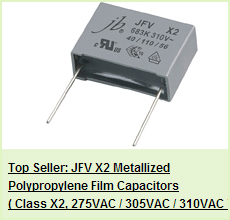jb told you have three sure ways to kill an electrolytic capacitor,please be noted.
Overvoltage: If the specified voltage is exceeded, current will leak through the isolation, not in a slow way that might regenerate weak areas, but violently, creating hotspots where additional break-down occurs. The danger of explosion is imminent.
Reversed polarity: As described, the inverse of regeneration = self destruction, will occur. If the applied voltage is near the normal (right polarity) working voltage, break-down is quick and violent. The effect of a low inverse voltage might be reversible.
Heat: Heat shortens the life of an electrolytic capacitor. A good rule of thumb is that every 10deg C over 85 will cut the life expectancy in half.
The rules for a long peaceful life are, of course, the opposite. When replacing electrolytic capacitors in old equipment, never, never go below the voltage rating of the original parts. Modern components are usually more compact, so if you cannot get the exact rating, choose a higher one, there will usually be room for it. If wrong polarization or overvoltage has caused an electrolytic capacitor to become hot, discard it. Look out for heat sources, in old power supplies, there is often a large hot drop resistor placed near the filter capacitor, make sure it doesn’t transfer too much heat to the capacitor.






0 Comment so far
Leave a reply